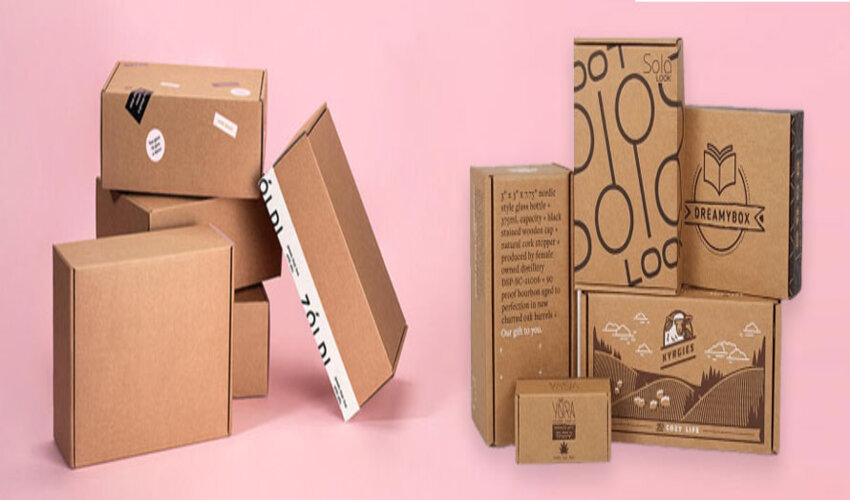
Introduction
Custom sustainable packaging is a present day technique to packaging that aligns with the environmental conservation desires. It involves using materials and methods which might be eco-friendly and decrease the carbon footprint related to packaging. This concept has received prominence in state-of-the-art market, as purchasers are getting greater conscious of their selections and their impact on earth.
History of Packaging
The history of packaging dates again to ancient times while herbal materials like leaves, animal skins, and gourds have been used to shop and delivery items. Over time, human innovation led to the improvement of materials like glass, metal, and plastic, which revolutionized the packaging industry. However, the unfavorable effect of these materials on the environment caused the look for sustainable options.
Understanding Sustainability
Sustainability in packaging refers to the utilization of substances and approaches that have minimum impact on the surroundings. It encompasses the whole lifecycle of the packaging, from raw fabric extraction to disposal. The principles of sustainable packaging encompass the usage of renewable or recycled substances, lowering waste, and ensuring that the packaging is reusable, recyclable, or compostable.
Benefits of Sustainable Packaging
One of the primary advantages of sustainable packaging is its superb effect at the environment. By reducing waste and the usage of eco-friendly materials, businesses can extensively lower their carbon footprint. Additionally, sustainable packaging enhances a emblem’s photo and allows construct customer loyalty, as customers are more likely to assist businesses that proportion their values.
Customization in Packaging
Customization in packaging lets in manufacturers to create a unique identity and add fee to their products. It entails designing packaging that meets the specific desires of the product at the same time as additionally aligning with the logo’s values and message. Customization can variety from the choice of materials to the layout and branding elements used at the packaging.
Materials Used in Sustainable Packaging
There are various substances that may be utilized in sustainable packaging, including recycled paper, biodegradable plastics, and plant-based totally substances. Each material has its own benefits and drawbacks, and the choice depends on elements like the form of product, the emblem’s values, and the target market.
Recycled Materials
Recycled materials, inclusive of paper, cardboard, and plastic, are typically utilized in sustainable packaging. These materials are sourced from submit-customer waste and go through a method to be transformed into new packaging. Recycling facilitates reduce the demand for virgin substances and lowers the environmental impact of packaging.
Biodegradable and Compostable Materials
Biodegradable and compostable substances damage down certainly over time, lowering the amount of waste that finally ends up in landfills. Biodegradable materials decompose with the assist of microorganisms, whilst compostable substances break down into nutrient-wealthy compost that may be used to enhance the soil. Examples of those substances include cornstarch-based totally plastics and sugarcane fibers.
Plant-Based Plastics
Plant-based totally plastics are derived from renewable sources like corn, sugarcane, and potatoes. They provide a more sustainable alternative to standard petroleum-based plastics, as they’re biodegradable and have a decrease carbon footprint for the duration of production. However, additionally they have some limitations, inclusive of a better fee and decrease sturdiness as compared to traditional plastics.
Edible Packaging
Edible packaging is a revolutionary concept that includes the use of food-grade substances to create packaging that may be fed on along with the product. This eliminates the need for disposal and reduces the amount of waste generated. Examples of suitable for eating packaging include wrappers made from rice paper and packing containers crafted from seaweed.
Industry Case Studies
Many agencies have effectively applied sustainable packaging answers and feature seen wonderful consequences. For example, Coca-Cola has devoted to making all its packaging recyclable with the aid of 2025, and Unilever has pledged to reduce its use of virgin plastic by 1/2 by 2025. These tasks no longer best advantage the environment but additionally enhance the emblem’s photo and attract eco-aware customers.
Consumer Perspective
Consumers are more and more aware of the effect of their choices at the surroundings, and they are stressful more sustainable alternatives. Trends show that purchasers are willing to pay a premium for merchandise with green packaging, and they’re much more likely to be dependable to brands that share their values. Companies that fail to conform to these converting client demands risk dropping marketplace proportion.
Global Regulations and Standards
Governments around the arena are imposing regulations and requirements to inspire the usage of sustainable packaging. These regulations range from us of a to us of a, but they commonly encompass necessities for recyclability, compostability, and the discount of positive dangerous materials. Companies need to be privy to those regulations and make certain that their packaging complies with the applicable standards.
Challenges and Limitations
Despite the many benefits of sustainable packaging, organizations face several challenges while implementing those answers. The preliminary value of transitioning to sustainable materials may be excessive, and there may be boundaries in terms of availability and first-rate. Additionally, there can be logistical demanding situations in sourcing and processing the materials, especially for smaller organizations.

Aimee Garcia is a Marketing Consultant and Technical Writer at DailyTechTime. She has 5+ years of experience in Digital Marketing. She has worked with different IT companies.

